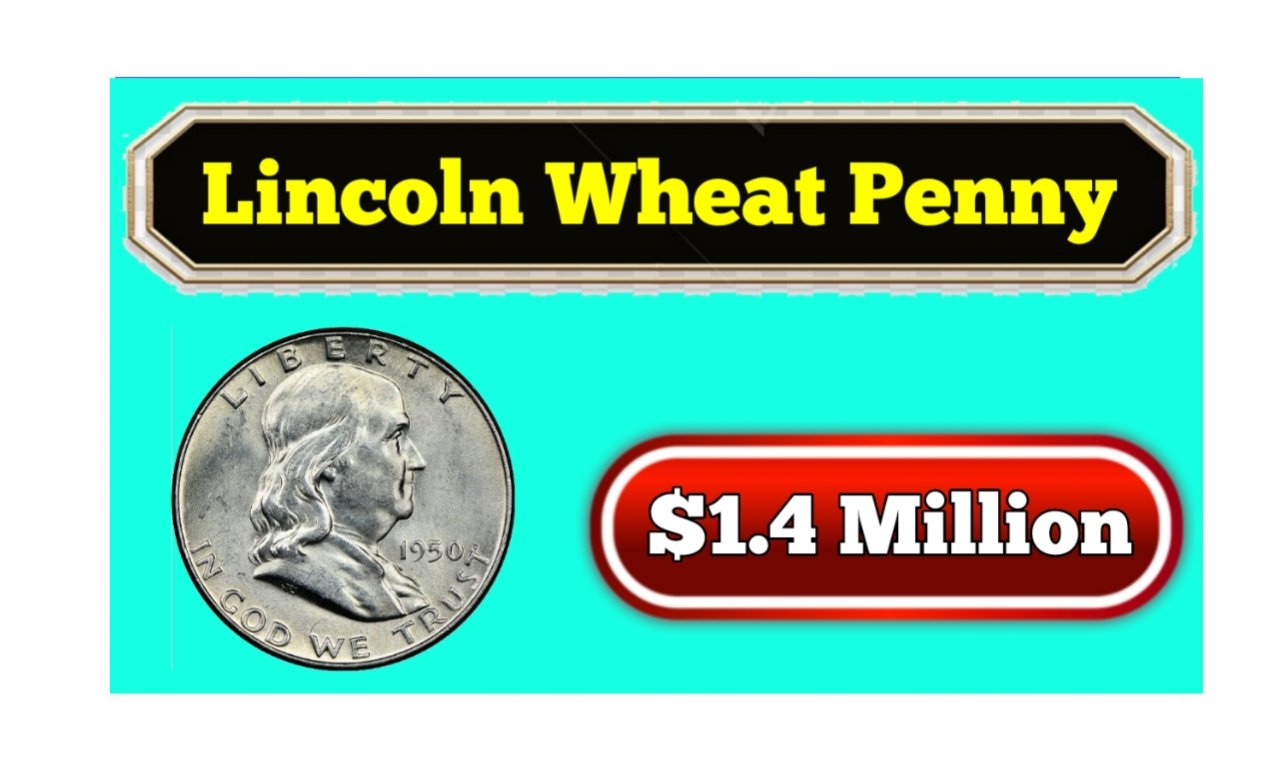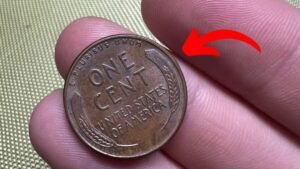Few coins capture the imagination of collectors like the 1943 copper Lincoln Wheat Penny. While most pennies are worth little more than their face value, this rare coin has sold for over $3 million, with experts speculating that a flawless specimen could fetch $5 million or more. But how did a simple one-cent piece become one of the most valuable coins in history?
The Legacy of the Lincoln Wheat Penny
Introduced in 1909 to commemorate Abraham Lincoln’s 100th birthday, the Lincoln Wheat Penny was revolutionary—it was the first U.S. coin to feature a real historical figure instead of an allegorical symbol like Lady Liberty. Designed by Victor David Brenner, the penny’s obverse (front) displays Lincoln’s profile, while the reverse (back) showcases two wheat stalks framing the words “ONE CENT” and “UNITED STATES OF AMERICA.”
These pennies were minted until 1958, when the wheat design was replaced by the Lincoln Memorial. Most were made of 95% copper, giving them their classic reddish-brown hue—except for one unusual year: 1943.
The Wartime Switch: Steel Pennies Replace Copper
During World War II, copper was in high demand for ammunition and military equipment. To conserve resources, the U.S. Mint switched to zinc-coated steel for the 1943 penny. These “steel cents” had a silvery appearance and were prone to rust, often confusing people who mistook them for dimes.
The Mint intended no copper pennies to be struck in 1943. However, a handful of copper planchets (coin blanks) from 1942 were accidentally left in the presses and struck with the 1943 design—creating one of the rarest and most valuable errors in U.S. coin history.
How Many 1943 Copper Pennies Exist?
Experts estimate that only 20 to 27 genuine 1943 copper pennies survive today. These coins were struck at three different mints: Mint Location Estimated Surviving Examples Notes Philadelphia (no mint mark) ~20 Most common (but still extremely rare) San Francisco (S) ~6 Exceptionally scarce Denver (D)1 The only known example
The 1943-D copper penny is the rarest of all, with just one confirmed specimen in existence.
Record-Breaking Auction Sales
The 1943 copper penny has shattered auction records, with prices reaching millions of dollars. Here are some notable sales: Year Sold Coin Description Grade Sale Price 2010 1943-D Copper (only known) PCGS MS64 Brown $1,750,0002013 1943 Philadelphia Copper PCGS AU55 $317,2502016 1943 Philadelphia Copper PCGS AU58 $305,5002023 1943-S Copper PCGS MS63 Brown CAC $500,000
The highest reported sale was over $3.1 million, making it one of the most expensive pennies ever sold.
How to Spot a Real 1943 Copper Penny (and Avoid Fakes)
Because of its immense value, the 1943 copper penny is heavily counterfeited. Here’s how to check if yours might be real:
🔍 Simple Tests to Verify Authenticity
- 🧲 Magnet Test: A real copper penny won’t stick to a magnet (steel pennies will).
- ⚖️ Weight Test: A genuine copper penny weighs ~3.11 grams, while a steel one weighs ~2.7 grams.
- 🔎 Visual Inspection: Look for a reddish-brown color (steel pennies are silver). Check for altered dates—many fakes are modified 1945 or 1948 pennies.
🧪 Professional Authentication
For absolute certainty, submit your coin to PCGS (Professional Coin Grading Service) or NGC (Numismatic Guaranty Corporation). These experts use X-ray fluorescence and high-powered microscopes to detect fakes.
Real-Life Discoveries: Found in Pocket Change?
Believe it or not, some 1943 copper pennies have been found in everyday places:
- A gumball machine in Philadelphia (1976)
- Inheritance collections and old penny jars
- Bank rolls and estate sales
While most discoveries happened decades ago, experts believe undiscovered examples could still be out there.
Other Valuable Lincoln Wheat Pennies
While the 1943 copper penny is the most famous, other Wheat Pennies are also highly collectible: Year/Type Estimated Value Notable Feature 1909-S VDB $1,000 – $250,000+ Rare first-year issue with designer’s initials 1914-D $300 – $5,500+ Low mintage from Denver 1922 Plain (No D) $500 – $25,000+ Missing mint mark error 1955 Doubled Die Obverse $1,000 – $15,000+ Misprinted doubling on date and letters 1944 Steel (Error) $75,000 – $400,000+ Accidental steel striking
Starting Your Own Lincoln Penny Collection
If the 1943 copper penny is out of reach, you can still build an impressive Wheat Penny collection:
- Date Set: One from each year (1909–1958)
- Mint Mark Set: Examples from Philadelphia, Denver, and San Francisco
- Error Coins: Look for doubled dies, off-center strikes, or missing mint marks
Many Wheat Pennies can be found in circulation, coin shops, or online auctions for affordable prices.
Could You Have a Million-Dollar Penny?
The 1943 copper Lincoln Wheat Penny is more than just a rare coin—it’s a piece of history, a wartime accident turned numismatic legend. Whether you’re a serious collector or just checking your spare change, you might be holding a fortune.
FAQs About the 1943 Copper Penny
1. Why is the 1943 copper penny so rare?
The U.S. Mint switched to steel pennies in 1943 to conserve copper for WWII. Only a few copper planchets were accidentally struck, making them extremely rare.
2. How much is a 1943 copper penny worth?
Prices range from $100,000 to over $3 million, depending on condition and mint mark. The 1943-D copper penny (only one known) sold for $1.75 million.
3. How can I tell if my 1943 penny is real copper?
- Magnet test: Copper pennies won’t stick.
- Weight: Should be ~3.11 grams (steel pennies are lighter).
- Color: Look for reddish-brown (not silver).
4. Are all 1943 pennies valuable?
No—only the copper ones. Most 1943 pennies are steel and worth 10¢ to $1 in good condition.
5. Has anyone found a 1943 copper penny recently?
Most discoveries happened decades ago, but experts believe a few may still be hidden in old collections or coin rolls.
Final Thought
The 1943 copper penny is a true numismatic treasure—proof that even the smallest coins can hold immense value. So next time you see a penny, take a closer look—you might be holding a million-dollar mistake!




